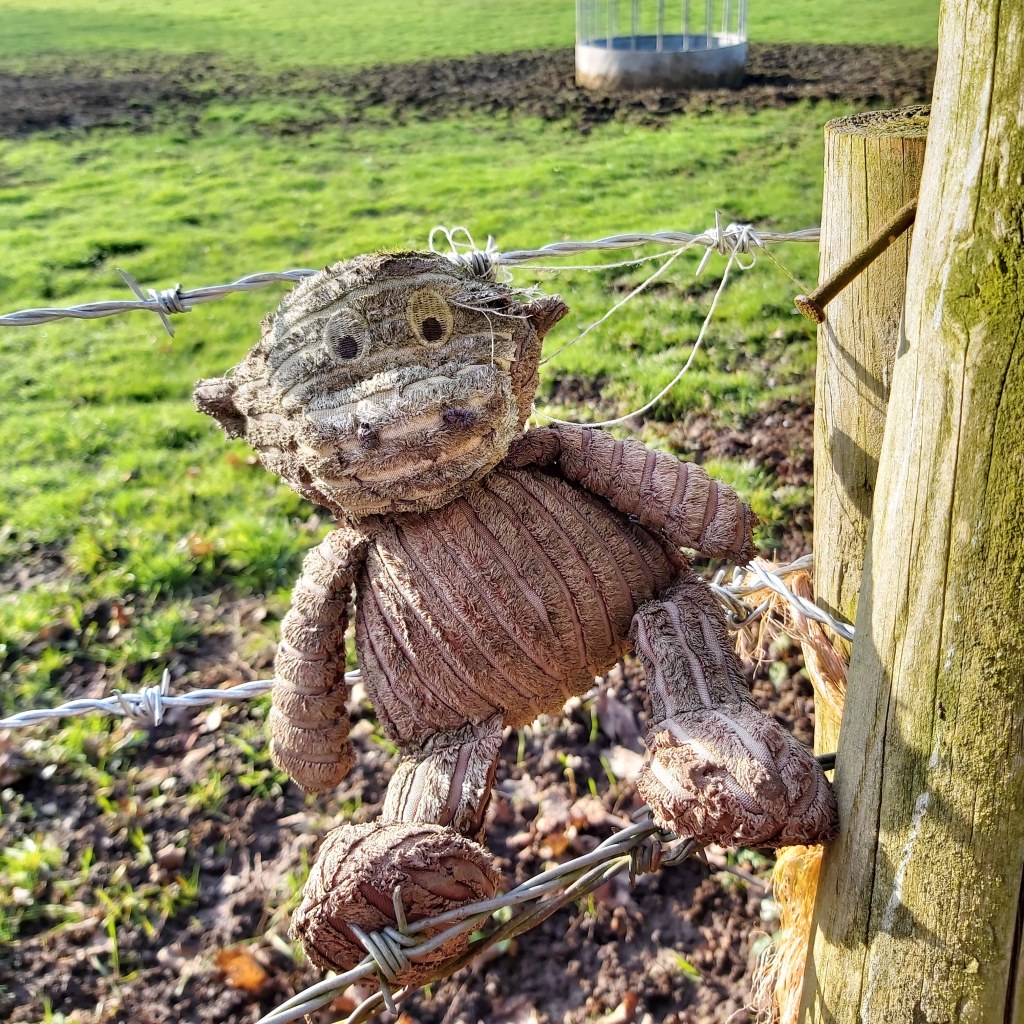I’ve long been curious about the items that you see hung on railings, laid on walls or hooked onto tree branches, waiting for their owner to return. Who picks them up, and why do they do it? On the one hand, I can see it keeps them from being trampled into the mud, but on the other, if you’ve dropped something surely you look for it on the ground or in the lost property office?

It wasn’t until March 2013 that I decided to photograph them, when my attention was caught by a glove that someone had carefully arranged on a railing so that the central finger was left upright. That composition had taken care and was more than an impulse to help, the passer-by was making a statement. What was going on? To learn more, I planned to photograph the first ten gloves I came across, wondering how quickly I would see them (26 days 2 hours and 50 minutes in case you’re curious). I certainly wasn’t expecting to get hooked and still be photographing them some eight years and 1500+ photos later – still fascinated by the variety, the arrangement and the localities.
I’ve walked many urban miles as well as hiking in mountains, countryside, sunshine, snow and rain and learned that people lose and rescue the most incredible range of items in all geographies. Gloves are certainly the most commonly lost property, closely followed by hats and dog leashes but in our throw away, consumer society no-one seems to come back for them. I can easily believe that someone might return for their lost glasses, for keys or for a favourite toy – but why do others think that they will come back for a hot water bottle, or a novelty reindeer washcloth? Come to think of it, why was the former at a bus stop and the latter in a wood in the first place?

Toys are the lost property that seem to provoke the most diligent arrangements; carefully sitting upright on a bench or on a ledge looking out for its lost owner. But every so often I see them thrown ten feet up into a tree canopy, or roughly shoved into a fence, head first. Compared to other items they are relatively rare, it took me some 257 days and 1033 miles of walking to see the first 4. Maybe that means they are being reunited through these random acts of kindness and that this is one of the few items that is worth rescuing? One MP went the extra mile, photographing a lost bunny left outside Parliament, posting it first on social media and then mumsnet to ensure it was eventually reunited with it’s owner[1]
[1] https://www.bbc.co.uk/news/uk-scotland-north-east-orkney-shetland-38610148
What I wasn’t expecting when I began this project was to see the items move. A mitten might start by being laid onto a bench by a passing stranger, then a few days later be on a railing, and then a little while longer be on a tree branch. For some reason, each passer-by has wanted to interact with the lost object and change the location by a few metres. It’s already been saved from trampling, so what is the rationale to move it away from the original spot?
It’s just not me who’s fascinated. During my strolls I’ve come across others photographing the same items and discovered other artists and a global community of ‘grammers with a similar obsession. The actor Tom Hanks (@tomhanks) is one, though he focuses on the forlorn item left where it fell, rather than those rescued by a stranger. Tracey Emin created a trail of lost baby things in bronze that wound through Folkestone in 2008[1]. Whilst ‘grammers include @otoshimono.jpg (Japanese for lost property) who invites you to submit images of the items you’ve found; @lostsoledatabase who specialises in lost shoes and @kyiv_lonely_glove from the Ukraine to name just a few.










I thought that the Covid pandemic might change things, and it has, but not how I was expecting. There are definitely more items lost as a result of more people walking as a form of exercise; compare my first year when I came across 65 items in total, with this December when I came across more than 70 in just that month. Plus, for the first time I have come across lost face-masks. But what hasn’t changed is people’s desire to help – despite the risk of infection the lost items are still being picked up by strangers and laid somewhere visible and safe nearby; even the face-masks which is directly in conflict with their role as protective equipment from others’ germs.
Since I’ve begun this project I’ve had many comments and chance conversations which are all about the hope of helping others. Similarly, I’ve come across many studies which show that performing random acts of kindness reduce stress and alleviate depression[1][2] so perhaps what I’ve learnt through this project is that it isn’t important if the owner is reunited with their lost item, it’s actually about creating a compassionate society, one in which we put ourselves before others and value kindness more than success.
Gallery of lost treasures may have begun as a study of futility, but it is actually a study of hope.

About me: I’m an artist who loves to tell stories about historical and contemporary culture. My aim is to encourage us all to rethink assumptions, or learn something new. You can see all the items that I’ve photographed on Instagram @gallery.of.lost.treasures or checkout my otherworks @jencableart.
[1] https://www.psychologytoday.com/gb/blog/emotional-nourishment/201711/why-random-acts-kindness-matter-your-well-being
[2] https://www.metimeaway.com/magazine/random-acts-of-kindness-and-your-wellbeing/
[1] https://www.creativefolkestone.org.uk/artists/tracey-emin/

I love the photo of the monkey caught in the barbed wire. He looks so hopeful.
>
LikeLiked by 1 person